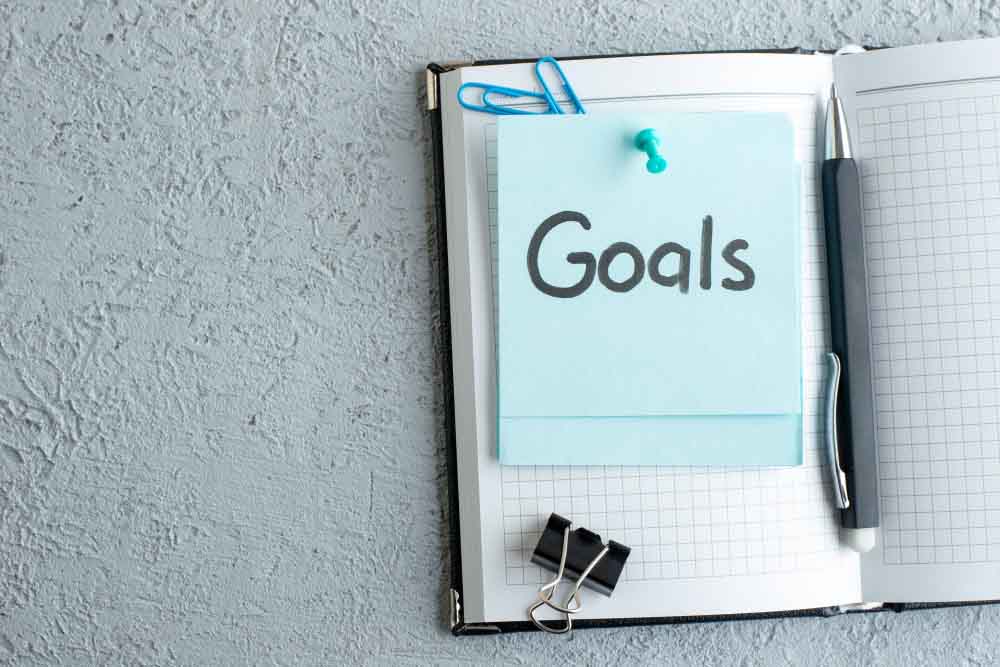Introduction:
A big ship is usually turned by small rudders just the same way big doors swing on relatively small hinges. This is how goal setting is to any innovative and forward-thinking professional office culture. To make a change, solve problems, and effectively execute strategies, goal setting is the key to maximizing every problem-solving skill as well as solution provision strategies. This why goal setting is not only for entry-level professionals but also for C-suite managers.
Setting clear and measurable goals is an essential strategy for achieving peak performance in any professional setting. By defining specific objectives, individuals can align their efforts, enhance motivation, and improve overall productivity. This article aims to introduce the concept of goal setting and provide a comprehensive guide to various goal-setting techniques and tools that can be employed to maximize performance on the job.

Understanding Goal Setting:
Goal setting is a process of identifying and defining specific targets that an individual or a team aspires to accomplish within a given timeframe. It provides direction, focus, and a sense of purpose, enabling individuals to channel their energy and efforts efficiently. Effective goal setting requires the following elements:
- Specificity: Goals should be precise, well-defined, and articulated, leaving no room for ambiguity or misunderstanding.
- Measurability: Goals should be quantifiable to enable progress tracking and evaluation of success.
- Attainability: Goals should be challenging yet realistic, encouraging individuals to stretch their abilities while maintaining a sense of achievability.
- Relevance: Goals should align with the individual’s or organization’s overall mission and vision, ensuring they contribute to meaningful progress.
- Time-bound: Goals should have a specific timeline or deadline, providing a sense of urgency and helping individuals stay focused on achieving them.
Goal Setting Techniques:
To effectively harness the power of goal setting, several techniques can be employed. These techniques include:
- SMART Goals: The SMART framework (Specific, Measurable, Attainable, Relevant, Time-bound) is a popular goal-setting technique. It emphasizes setting objectives that are clear, quantifiable, achievable, aligned with overall goals, and have a defined timeframe.
- OKRs (Objectives and Key Results): Popularized by companies like Google, OKRs are a goal-setting technique that aligns individual and team goals with the organization’s broader objectives. Objectives represent what is to be achieved, while key results are specific, measurable outcomes that demonstrate progress toward the objectives.
- Chunking: Breaking down larger, complex goals into smaller, manageable sub-goals helps individuals maintain focus and build momentum. By tackling smaller tasks, individuals can stay motivated and experience a sense of accomplishment, propelling them toward their larger objectives.
- Stretch Goals: Setting ambitious goals that push individuals beyond their comfort zones can spur innovation, growth, and exceptional performance. While the attainment of stretch goals may be challenging, it promotes personal and professional development.
- Performance Dashboards: Utilizing performance dashboards or progress tracking tools can provide visual representations of goal achievements. These tools offer a clear overview of individual or team performance, highlighting areas of success and areas that require improvement.

Goal Setting Tools:
Several tools are available to assist individuals in setting and tracking their goals effectively. These tools include:
- Goal-Setting Worksheets: Printable or digital goal-setting worksheets offer structured frameworks for defining goals, identifying action steps, and tracking progress. They provide a visual representation of goals and serve as a constant reminder of objectives.
- Project Management Software: Platforms like Asana, Trello, or Jira enable individuals and teams to break down goals into tasks, assign responsibilities, set deadlines, and track progress. These tools enhance collaboration, organization, and overall goal attainment.
- Habit Tracking Apps: Habit-tracking applications such as Habitica or Todoist can be beneficial for incorporating goal-related habits into daily routines. By monitoring habits that contribute to goal achievement, individuals can establish consistent practices that drive success.
- Calendar and Reminder Apps: Utilizing digital calendars or reminder applications, such as Google Calendar or Microsoft Outlook, can help individuals stay on track with deadlines and milestones. These tools provide notifications and ensure important dates are not overlooked.
Conclusion:
Goal setting is a powerful strategy for optimizing performance and achieving peak results in any professional setting. By adopting techniques like SMART goals, OKRs, chunking, and stretch goals, and utilizing tools like goal-setting worksheets, project management software, habit-tracking apps, and calendar reminders, individuals can effectively plan, track, and attain their objectives. By setting clear and meaningful goals, professionals can unlock their full potential, enhance productivity, and experience a sense of accomplishment in their work.




